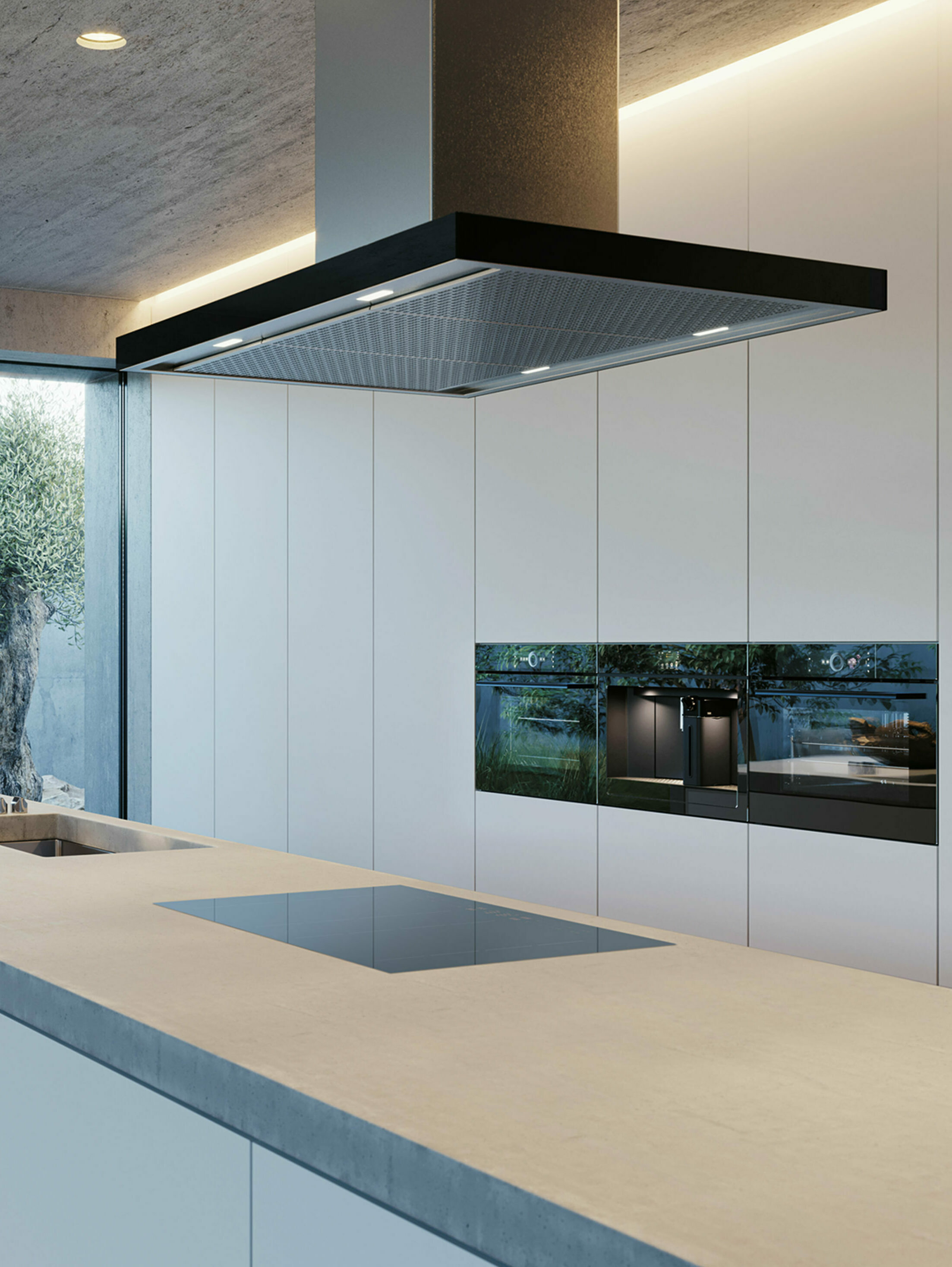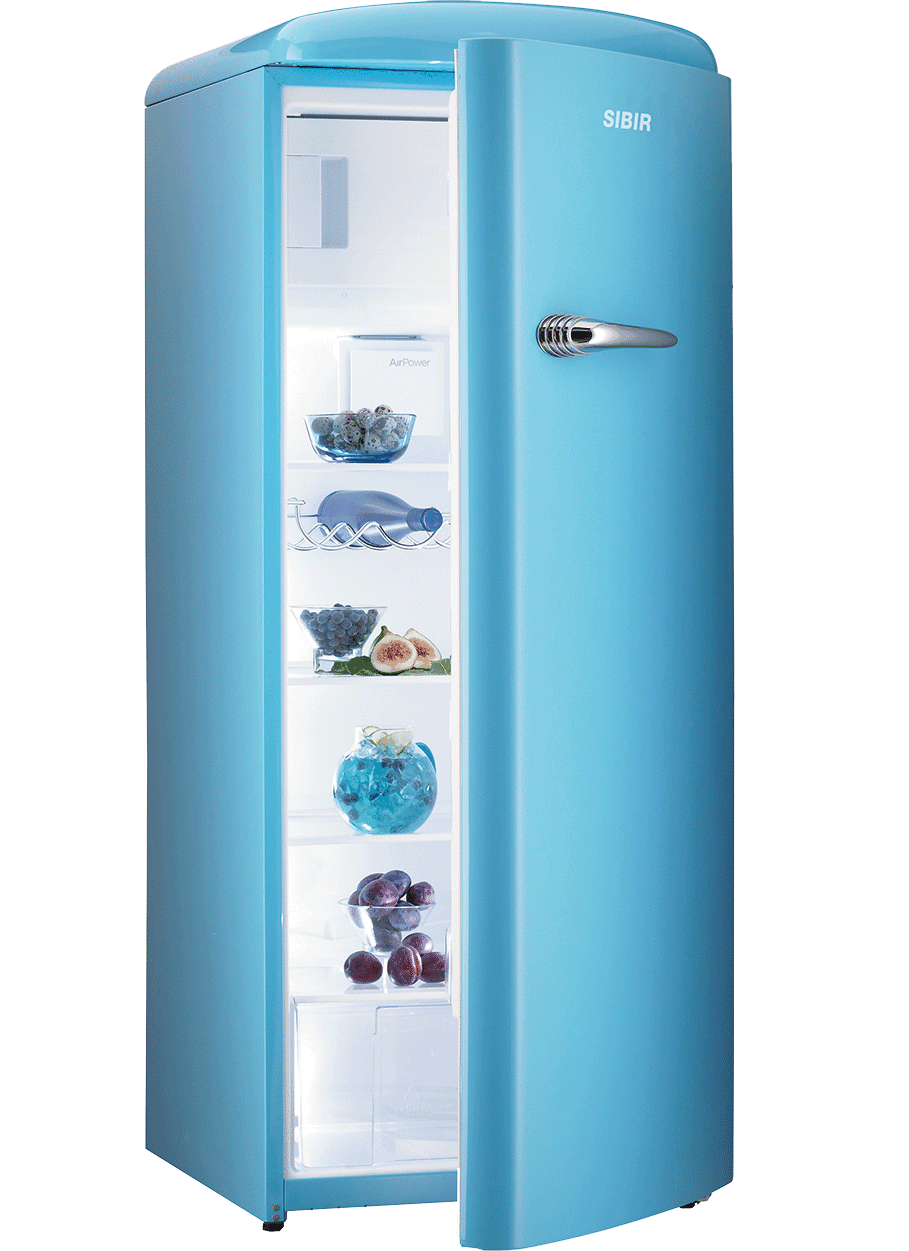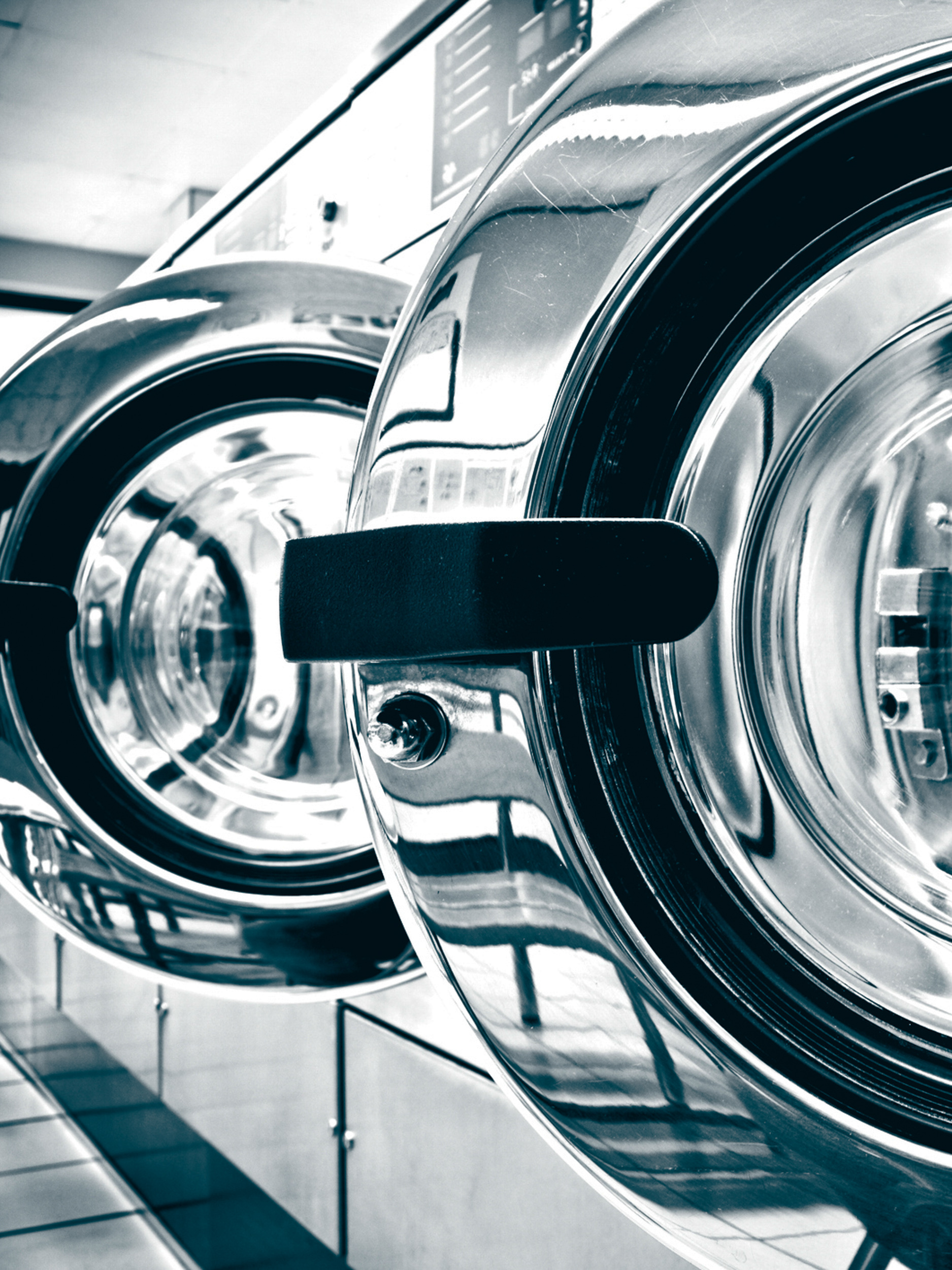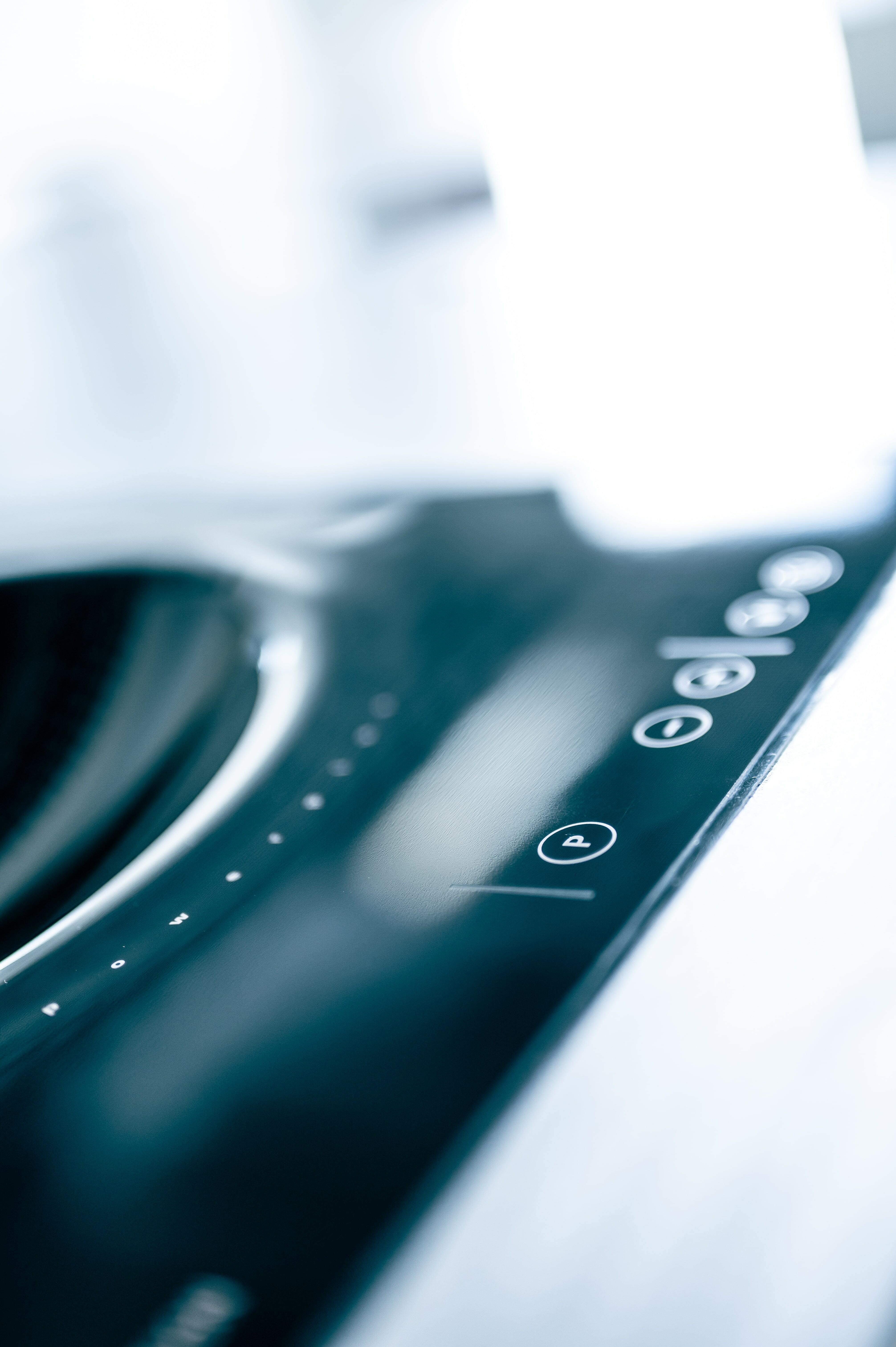The grease filters on the extractor hood perform one of the most important functions on the appliance: they absorb fat and oil that arise when frying and cooking. If they are not cleaned at regular intervals, they become blocked. As a result, the functionality of the appliance is impaired and a greasy film accumulates on the walls, kitchen cabinets and the hood. This is not only unhygienic and a paradise for bacteria, it also spreads an unpleasant greasy odour in the kitchen and living space. In the worst case, extreme dirt can lead to the motor clogging up, breaking the extractor hood. Too much grease and hardened fat can also result in fire.
To prevent all this, thorough cleaning and care on both the interior and exterior of the appliance are required at regular intervals.
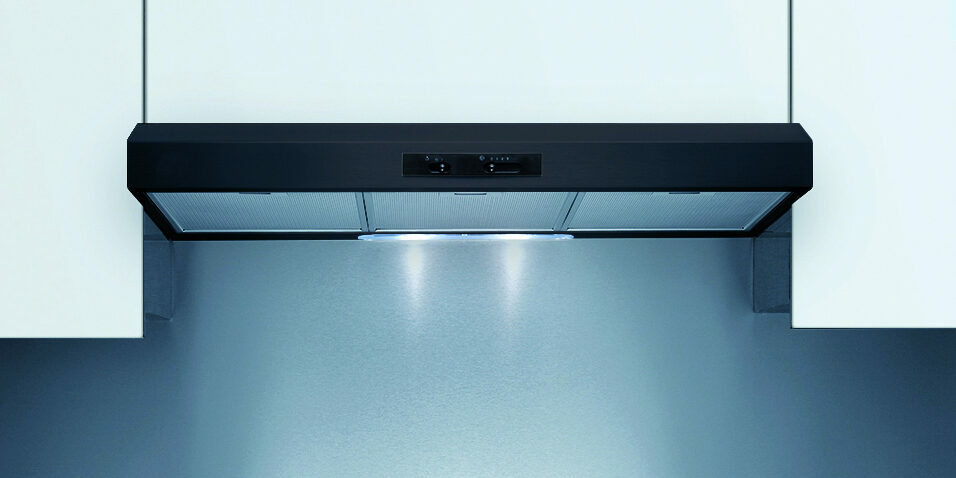
Different operating modes require different cleaning
The function of an extractor hood – to filter out odours and fatty vapour from the air – is clear to most people. During this process, the fumes that arise during cooking and frying are extracted and directed through a filter. This separates grease from the fumes. The cleaned air is then redirected. Where the air is redirected depends on the type of the extractor. Generally, there are two different operating modes: extracted air and recirculation air. This means that cleaning should be performed a little differently depending on the type of extractor.
Cleaning - extractor with extracted air
In the case of an extractor hood with extracted air, the moisture is dissipated outside. In order to ensure optimal suction for this operating mode, only the metal filters need to be regularly degreased and cleaned. Apart from that, the surfaces on the outside and inside of the appliance should be cleaned.
Cleaning - extractor with recirculation air
For an extractor with recirculation air, the dirty air is drawn into the appliance and cleaned by way of a grease filter and active carbon filter. The cleaned air is then reintroduced into the kitchen. Regularly cleaning the grease filters is also indispensable for this operating mode. Moreover, the active carbon filter responsible for neutralising odours needs to be kept clean and maintained. Depending on the type of filter, the active carbon can be regenerated or replaced. The exception are maintenance-free odour filters that replenish themselves. Of course, cleaning the interior and exterior of the appliance is also important for recirculation air extractors.
How do you clean an extractor hood?
Step-by-step guide:
- Spray the housing of the extractor hood with a degreaser and allow it to take effect for a few moments. Then wipe the surface with a cloth and warm water. The hotter the water is, the more easily the grease can be removed. Dry the surface with a lint-free cloth.
- Carefully detach the metal filters from their bracket and clean off the grease. The exact approach depending on the amount of grease is explained in the next section.
- Now clean the interior of the extractor using washing-up liquid, a damp cloth and water. For stubborn dirt, it is advisable to also use a degreaser spray.
- Carefully reinsert the cleaned filters into their bracket.

How do you clean the filters in the extractor?
If the grease filters are only moderately dirty, they can be soaked in hot water with degreaser or washing-up liquid for an hour and then cleaned with a brush in circular motions. After that, rinse them off well with hot water and wipe dry.
In the case of more stubborn dirt on the grease filters, a tougher approach is required. Spray them with a degreaser and leave the cleaning agent to take effect for a few moments. Then place the metal filters into the dishwasher and choose a long, intense program with a high temperature (min. 60°C). If these are not dripping in grease, you can place them in the dishwasher vertically. This leaves space for other crockery. In this case, refrain from washing glassware with the filters since an unsightly layer of grease can be left behind. However, if the filters are very greasy, they should be placed horizontally in the upper section of the dishwasher. The higher water pressure at this part of the dishwasher makes the filters easier to clean.
Sustainable alternative - baking powder as a home remedy:
Place the metal filters into the sink or a large container and sprinkle over a packet of baking powder. Then, pour over boiling hot water until everything is completely covered. Leave everything to soak for at least 30 minutes. After that, clean under running water and rinse off.
You can also mix the baking powder with a tablespoon of water into a thick paste. This paste can then be applied to the metal filters in circular motions. After leaving to soak, the filters can then be cleaned as described above.
Recirculation air extractor - regenerating the active carbon filter
Besides the metal filter, the active carbon filter should also be cleaned, regenerated or replaced every 10-12 weeks. Otherwise, cooking odours will no longer be extracted reliably and the extractor hood will no longer work effectively.
Active carbon filters can be regenerated as follows (please note the instructions in the operating manual):
- Place the filter in the dishwasher and clean with an intense program at a maximum of 70°C without any cleaning agent.
- Clean under hot running water and leave to dry. Then dry for around two hours in a preheated oven at around 70°C.
- Some types of filters are regenerated in the oven. Preheat the oven to +/- 230°C and allow the active carbon filter to regenerate for 60 minutes (or according to the instructions).
